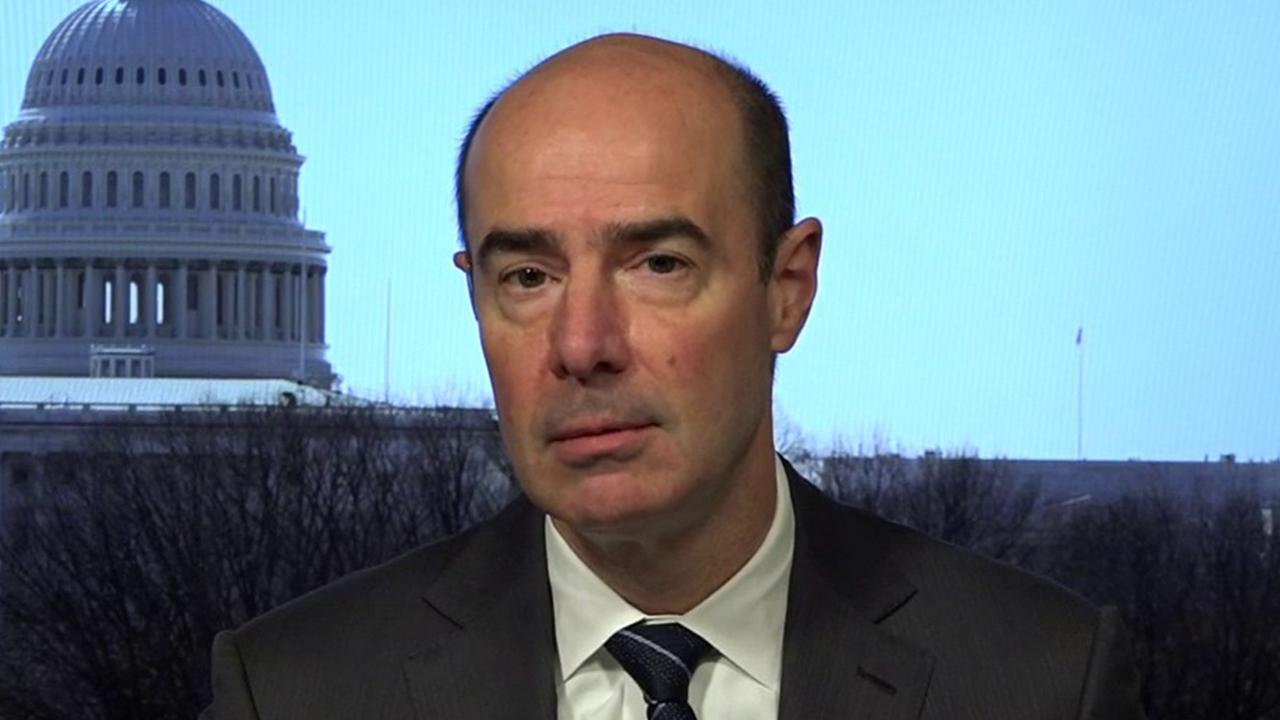Coronavirus unemployment could hit post-depression record, economists say
Estimates vary drastically for how high unemployment will eventually climb, but economists broadly agree that it will be grim
Get all the latest news on coronavirus and more delivered daily to your inbox. Sign up here.
Economists expect unemployment in the U.S. to surge to a post-Great Depression high as the coronavirus pandemic forces American life to come to a grinding halt.
Already, in the past three weeks, more than 16 million Americans — or about 10 percent of the workforce — have filed for unemployment benefits, stunning evidence of the economic calamity inflicted by the virus outbreak.
The unemployment rate climbed to 4.4 percent in March, according to Labor Department data that primarily reflected the early part of the month, before a majority of cities and states implemented strict stay-at-home policies, up from a half-century low of 3.5 percent in February.
Despite the unprecedented government fiscal relief effort, including a $2.2 trillion stimulus package, former Federal Reserve Chairwoman Janet Yellen, said this week the unemployment rate is now at least 13 percent, the highest since the 1940s. That would also exceed the 10 percent peak during the worst of the Great Recession more than a decade ago and top the previous post-World War II high of 10.8 percent in 1982.
HERE'S HOW EXPANDED UNEMPLOYMENT BENEFITS WORK
One of the nation’s top economists, Yellen predicted a 30 percent contraction of GDP this year, but has seen models as high as 50 percent.
“The internal dynamics inside the report are a sober, clear-eyed precursor to what is going to be the largest bloodletting in the labor market since the 1929 to 1933 period of the Great Depression,” Joe Brusuelas, chief economist at RSM, said after the release of the March jobs report last Friday.
Brusuelas added: “Despite Congress committing roughly 11.4 percent of gross domestic product in an attempt to mitigate the effects of shutting the economy down to limit the spread of the coronavirus, it is clear that it is not enough.”
MORTGAGE APPLICATIONS PLUMMETING
Estimates vary drastically for how high unemployment will eventually climb, but economists broadly agree that it will be grim. One particularly bleak forecast released by the St. Louis Federal Reserve predicted that up to 47 million jobs could disappear from the U.S. economy, bringing the jobless rate to a stunning 32 percent, exceeding the 24.9 percent peak during the Great Depression.
“These are very large numbers by historical standards, but this is a rather unique shock that is unlike any other experienced by the U.S. economy in the last 100 years,” the Fed researchers wrote.
The downturn seems the first since the 2008 financial crisis to be dubbed a recession by the National Bureau of Economic Research, which described it as a “significant decline in economic activity” that lasts more than a few months.
HOW TO FILE FOR UNEMPLOYMENT BENEFITS
Unemployment could take years to return to pre-coronavirus levels, according to a Bloomberg survey of economists. The economists projected that unemployment will fall gradually after peaking in the second quarter of 2020, but will only drop to 8.1 percent in the final three months of the year. Even in 2020, unemployment is expected to remain at 5.4 percent, well above the historic lows consistently seen prior to the pandemic.
“It will be a gradual re-opening of the economy, so a return to ‘business as usual’ is many months away. Throw in crippling financial losses and a legacy of defaults and it means we estimate U.S. economic output won’t return” to the late-2019 peak until mid-2022 at the earliest, James Knightley, chief international economist at ING Financial Markets, wrote.




















